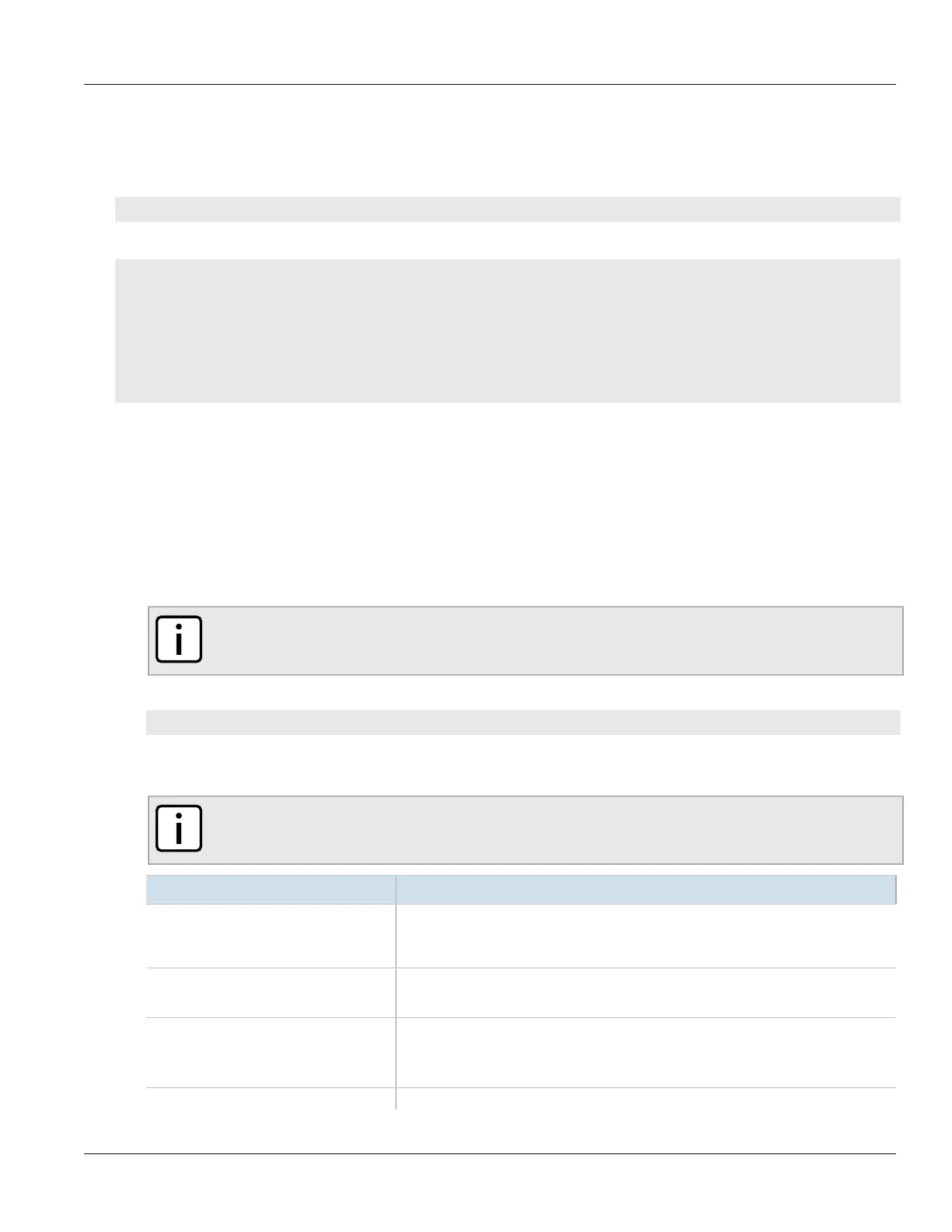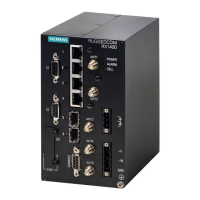RUGGEDCOM ROX II
CLI User Guide
Chapter 12
Tunneling and VPNs
Viewing a List of Dynamic L2TPv3 Tunnels 381
Section12.4.4.2
Viewing a List of Dynamic L2TPv3 Tunnels
To view a list of dynamic L2TPv3 tunnels, type:
show running-config tunnel l2tpv3 dynamic tunnel
If tunnels have been configured, a table or list similar to the following example appears:
ruggedcom# show running-config tunnel l2tpv3 dynamic tunnel
tunnel
l2tpv3 dynamic tunnel 1
hostname ruggedcom
authentication none
digest md5
interop 0
!
!
If no tunnels have been configured, add tunnels as needed. For more information, refer to Section12.4.4.3,
“Adding a Dynamic L2TPv3 Tunnel”.
Section12.4.4.3
Adding a Dynamic L2TPv3 Tunnel
To add a dynamic L2TPv3 tunnel, do the following:
1. Make sure the CLI is in Configuration mode.
NOTE
The tunnel name must consist of one to three numeric and/or lowercase alphanumeric characters.
2. Add the tunnel by typing:
tunnel l2tpv3 dynamic tunnel name
Where name is the name of the tunnel.
3. Configure the following parameter(s) as required:
NOTE
Transport encapsulation is only configurable when Dynamic L2TPv3 is in lac mode.
Parameter Description
enabled Synopsis: { true, false }
Default: true
Enables/Disables the tunnel
remote-ip { remote-ip } Synopsis: A string 7 to 15 characters long or a string 6 to 40 characters long
Ip address of remote tunnel endpoint
hostname { hostname } Synopsis: A string 1 to 63 characters long
Hostname used in AVP
This parameter is mandatory.
local-ip { local-ip } Synopsis: A string 7 to 15 characters long or a string 6 to 40 characters long

